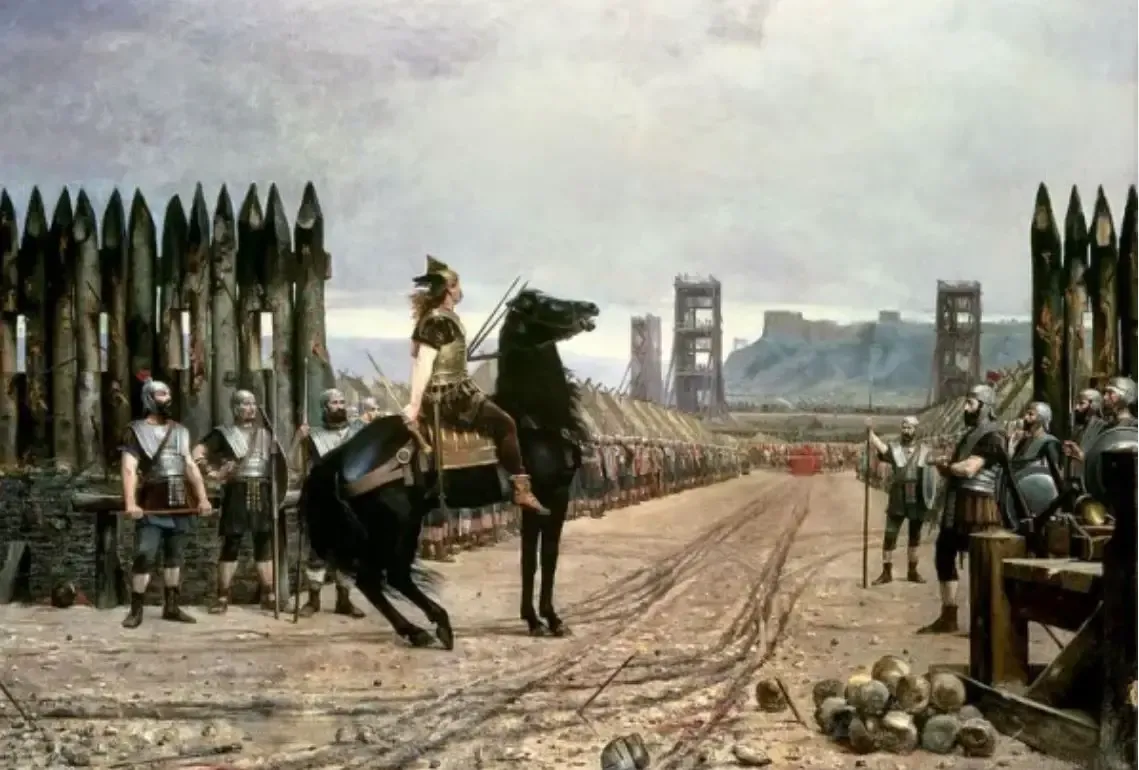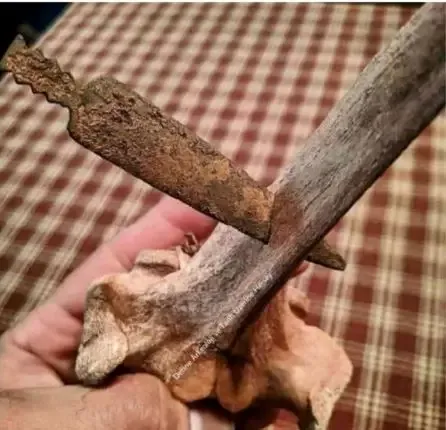The Gallic Wars, also known as the Roman-Gallic Wars, involved recurring disputes between the Romans and different peoples of Celtic origin, such as the Senones, the Insubres, the Boii, and the Gaesatae; and that last for centuries. It was concluded in 52 B.C. when Julius Caesar imprisoned the Gallic leader Vercingetorix and began the Roman expansion into Europe.

Recently, a photo obtained from a profile on a social media platform talks about History and Art on Facebook and aroused the curiosity of many readers. In this photo that alludes to the Gallic Wars, the tip of a spear (also known as a javelin) easily pierces a bone, as can be seen in Fig. 1 below. No other information about the piece was provided.

According to the Teacher, Marcelo Machado (Veterinary Anatomy / UFPR), the bone in question refers to the thoracic vertebrae, most likely from a ruminant or even a large horse, with the tip of the spear embedded in the spinous process, which is long and wide in these animals. In fact, what makes it very difficult to identify the species is precisely the angle of the photograph, recorded without any anatomical positioning. Despite the unfavorable position, the characteristics that allow the identification of the bone, in addition to the spinous process, are the short transverse processes and The articular facets of the reduced cranial and caudal processes. Despite the unfavorable position, the characteristics that allow the identification of the bone, in addition to the spinous process, are the short transverse processes and the articular facets of the reduced cranial and caudal processes. These are seen in Figure 2.

Other questions may remain vague: Wouldn’t there be oxidation of the bone around the tip of The spear? Was this really a Roman spear? Wouldn’t the bone exhibit impact upon entering The weapon and would it not break into smaller pieces, Taking into account the kinetic load involved in The action? It remains to know more, including, about The veracity of The image…





